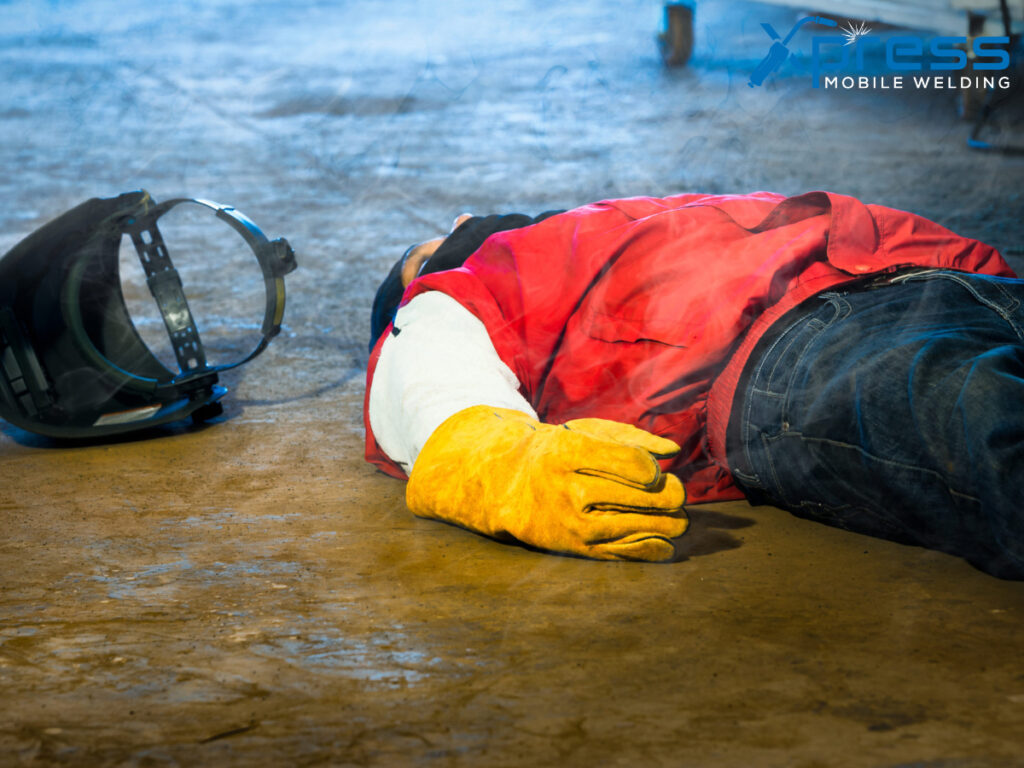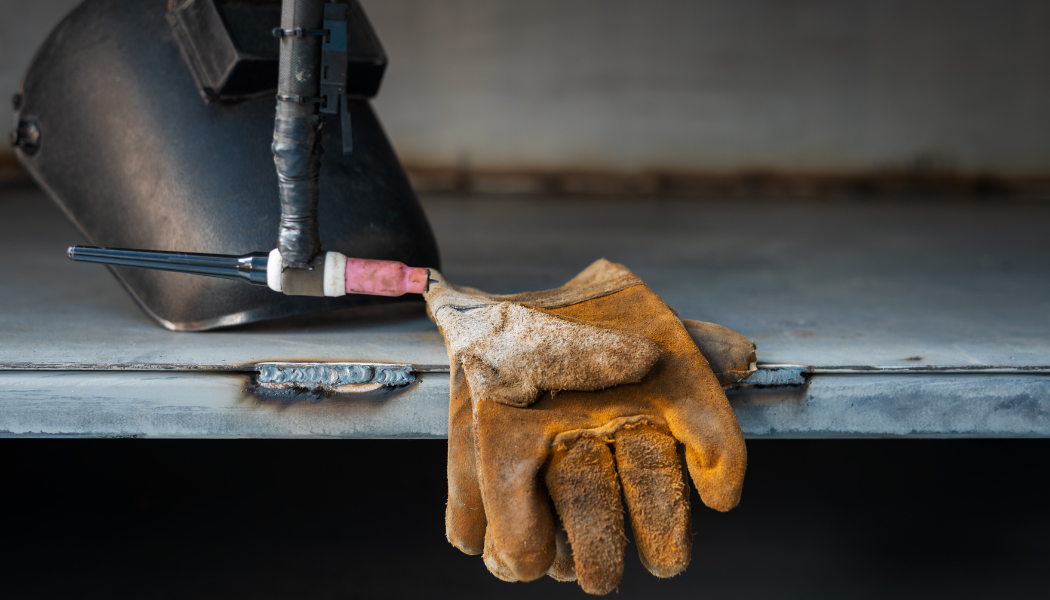Road-Tested Welding Safety: Precautions Every Mobile Welder Must Know
Navigating the realm of mobile welding is akin to walking through a minefield, demanding an acute awareness of potential hazards. This article elucidates vital safety precautions, guidelines, and best practices that mobile welders should adhere to for maintaining a secure working environment.
Highlighting protective gear use, ventilation measures, equipment handling rules, fire prevention strategies, and safety education’s significance provides invaluable insights into reducing occupational risks in this field.
Key Takeaways
• Use appropriate personal protective gear such as safety glasses, welding helmets, and heat-resistant gloves to reduce occupational risks and protect against eye injuries and burns.
• Ensure proper ventilation and respiratory protection by positioning ventilation at the emission source and using respirators to prevent inhalation of harmful gases and particles.
• Practice safely handling and storing flammable materials, understand material classification, and adhere to emergency protocols to minimize incidents and potential hazards.
• Implement fire prevention and control measures such as using fire-resistant materials, having accessible fire extinguishing equipment, clear evacuation routes, and training personnel on fire response to prevent and control fires in the welding work area.
Use of the Right Protective Gear
Appropriate protective gear, including safety glasses, welding helmets, and heat-resistant gloves, is imperative for mobile welders to mitigate potential risks associated with their profession.
The aspect of eye protection must be considered as it shields the eyes from harmful infrared or ultraviolet rays emitted during the welding process.
Furthermore, heat resistance becomes a vital factor considering the extreme temperatures involved in welding operations. Protective wear, such as heat-resistant gloves, safeguards the worker’s hands from burns and possible injuries due to hot metals or sparks.
Proper Ventilation and Respiratory Protection
Proper ventilation and respiratory protection are critical in preventing inhaling harmful gases and particles often produced during welding.
Specifically, ventilation placement is pivotal in reducing exposure to hazardous fumes. Positioning the ventilation system directly at the emission source ensures contaminants are rapidly drawn away from the welder’s breathing zone.
Moreover, respirators offer an additional layer of protection against potential respiratory diseases. However, they should not be used as a substitute for adequate ventilation but rather as a complement. In scenarios where effective control of fume generation is unattainable through ventilation alone, appropriate use of respirators becomes paramount.
Hence, understanding proper ventilation placement techniques and using respiratory protective equipment can significantly reduce health risks associated with welding operations.
Handling of Equipment and Materials
The subsequent discussion will delve into two critical aspects of welding safety: the safe handling and storage of flammable materials and the correct use and maintenance of welding equipment.
An in-depth exploration will be undertaken concerning procedures for mitigating risks associated with combustible substances, including appropriate handling protocols, storage specifications, and emergency response measures.
Additionally, an emphasis on the importance of regular preventive checks, proper upkeep routines for welding apparatuses, and adherence to manufacturer guidelines to maintain optimal functionality and safety during operations will be underscored.
Safe Handling and Storage of Flammable Materials
Safe handling and storing of flammable materials is crucial in mobile welding to prevent accidents such as fires, explosions, or chemical burns. Material classification plays a significant role in understanding the risk associated with each item. Flammable gases, liquids, and solids require specific storage methods to mitigate potential hazards.
Strict adherence to emergency protocols can significantly reduce the severity of any incident. These include immediate evacuation plans, appropriate firefighting equipment, and prompt reporting to relevant authorities.
Correct Use and Maintenance of Welding Equipment
Maintenance and correct equipment utilization in joining materials through heat application is critical for preventing operational mishaps or inefficiencies. Proper welding techniques and regular equipment calibration play a significant role in maintaining a safe working environment, enhancing productivity, and increasing the lifespan of the tools.
Proper training on welding techniques can minimize risks associated with improper handling.
Equipment calibration ensures optimal performance and consistency in results, thus reducing chances for accidents.
Regular maintenance checks help detect potential faults early, averting possible failures.
In essence, meticulous adherence to safety guidelines contributes significantly towards creating a hazard-free workspace while also upholding quality standards.
Fire Prevention and Control
Fire prevention and control measures are crucial in mobile welding, as sparks generated during the process can easily ignite flammable materials within the vicinity. Therefore, it is essential to implement emergency planning procedures and use fire-resistant materials whenever possible.
Emergency planning includes having accessible fire extinguishing equipment, ensuring a clear evacuation route and training personnel to respond in case of a fire. Fire-resistant materials such as protective clothing and non-combustible screens can further reduce the risk of fires.
Additionally, maintaining a clean work area devoid of unnecessary flammable items is advised.
Regular Training and Safety Education
Regular training and education in protection measures are indispensable to reduce potential hazards associated with heat-induced work environments. Safety legislation mandates this continuing education, providing a legal framework for companies to follow.
It is paramount that safety protocols align with these directives, ensuring all workers are adequately equipped with knowledge regarding hazard prevention and accident response strategies. This includes recognizing dangers in their immediate surroundings, understanding the proper use of protective equipment, and implementing emergency procedures when necessary.
Regular drills simulating real-life scenarios foster immediate and effective responses during actual accidents. Thus, enhanced training programs promote a safer workplace and ensure compliance with safety legislation.
Frequently Asked Questions
What are some common health risks associated with mobile welding?
Common health risks of mobile welding include burns, eye damage, and respiratory issues due to Welding Fumes Exposure. The use of Personal Protective Equipment significantly reduces these potential hazards.
How can mobile welders maintain their physical well-being?
To maintain physical well-being, mobile welders should use ergonomic equipment to reduce strain and fatigue. Regular exercise also aids in maintaining strength, endurance, and flexibility, which is crucial for optimal performance and injury prevention.
What legal obligations do mobile welders have regarding safety?
In a world where routine may seem monotonous, mobile welders are legally bound to perform regular Workplace Inspections and Equipment Maintenance. This obligation ensures an environment that prioritizes safety and minimizes potential occupational hazards.
Are there any specific safety considerations for mobile welders working in extreme weather conditions?
Mobile welders should prioritize Equipment Protection and Weather Adaptations in extreme weather conditions. This includes safeguarding welding tools from adverse elements and adapting work methods for safety enhancement to align with climatic challenges.
How can a mobile welder ensure the safety of bystanders or the public while welding in a public space?
In the bustling sphere of public interaction, mobile welders must erect welding barricades, an indispensable fortress safeguarding bystanders from hazardous sparks and ultraviolet radiation during welding operations in public spaces.



